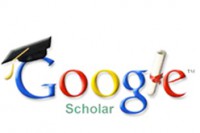Analysis of Vowel Sounds Errors in Arabic Conversation Modern Islamic Boarding School Muhammadiyah Daarul Khoir Gunungkidul Students
DOI:
https://doi.org/10.18196/mht.v6i1.19246Keywords:
Vocal Sounds, Arabic Conversation, Daarul KhoirAbstract
This study aims to determine the form of errors in the vowel sounds of Arabic words in the Arabic conversation of students at the Modern Muhammadiyah Islamic Boarding School Daarul Khoir Gunungkidul and to determine the factors that cause the occurrence of vowel errors. This research is a descriptive qualitative research. Data obtained by observing and interviewing students. The results of this study are four vowel errors, namely the change in vowel a to u. There is also a change in the vowel sound i to e. In addition, there were also errors in long vowel sounds which were pronounced short, even so short vowel sounds were pronounced long. The factors causing the error were that some students had not mastered Arabic rules correctly, made pronunciation easier, efficiency in pronunciation and the lack of students listening to Arabic words and sentences.
References
Ahmad, Muhammad Abd al-Qadir. 1979. Turuq Ta’lim al-Lughah al-’Arabiyyah. Vol. 1. Kairo: Maktabah al-Nahdah al-Misriyyah.
Amrulloh, Muhammad Afif. 2016. ‘FONOLOGI BAHASA ARAB (Tinjauan Deskriptif Fonem Bahasa Arab)’. Al-Bayan 8 (1): 1–13.
Haniefa, Rifda. 2022. ‘IMPLEMENTASI MODEL PENILAIAN HOTS (HIGHER ORDER THINKING SKILLS) PADA PENILAIAN EMPAT KETERAMPILAN BERBAHASA ARAB’. Ta’limi 1 (1): 49–71.
Marlina, Lina. 2019. Pengantar Ilmu Ashwat. Edited by Agung Mulyadin. Bandung: Fajar Media.
Mohamad Isa, Abdul Azim, Muhamad Zaidi Zakaria, Muhammad Arsyad Abd Majid, Fatima Oukhadjou, and Ibrahim Abdullah. 2020. “اختلاف الحركات في القرآن الكريم في ضوء علم الأصوات الحديث: Vowel Differences In Quran From Modern Phonetical View”. The Sultan Alauddin Sulaiman Shah Journal (JSASS) 7 (1):114-29. https://jsass.kuis.edu.my/index.php/jsass/article/view/20.
Pratama, Arna Eka Surya. 2022. ‘ANALISIS FAKTOR-FAKTOR KESULITAN BELAJAR PENDIDIKAN AGAMA ISLAM KELAS X SMKS MELATI HAMPARAN PERAK’. LOKAKARYA-Journal Research and Education Studies 1 (2): 19–27.
Rifai, Arief Bahtiar. 2019. ‘Permainan Kartu Sebagai Media Pembelajaran Untuk Meningkatkan Daya Serap Belajar Siswa (Nahwu)’. Maharat: Jurnal Pendidikan Bahasa Arab 2 (1): 1–10. https://doi.org/10.18196/mht.2112.
Sholihin, M. Nur. 2020a. ‘Peran Ilmu Al-Ashwat Dalam Pelafalan Huruf Hijaiyah (KajianTeoritik Linguistik Terapan)’. Saliha 3 (2): 110–27.
Sholihin, M Nur. 2020b. ‘Peran Ilmu Al-Ashwat Dalam Pelafalan Huruf Hijaiyah (KajianTeoritik Linguistik Terapan)’. Saliha 3 (2): 110–27.
Sugiyono. 2017. Metode Penelitian Pendidikan Pendekatan Kuantitatif, Kualitatif, Dan R&D. Vol. 26. Bandung: Alfabeta.
Wahyudi, Muhammad, Piet Hizbullah Khaidir, Siti Nikmatul Rochma, Iim Nur Inayah, Helma Autharina Salsabil Nahda, and Andi Hazrah Nurhaliza Ibrahim. 2022. ‘Pendampingan Pengurus Pondok Dalam Menyusun Bahan Ajar Percakapan Bahasa Arab’. Jurnal Pengabdian Kepada Masyarakat Indonesia 2 (1): 48–54. https://journal.amikveteran.ac.id/index.php/jpkmihttps://journal.amikveteran.ac.id/.
Wahyuningsih, Sri, and Kaharuddin. 2019. ‘INTERFERENSI BAHASA DAERAH DAN BAHASA INDONESIA TERHADAP PENGGUNAAN BAHASA ARAB’. Al-Af’idah 3 (2): 90–100.
Downloads
Published
How to Cite
Issue
Section
License
Please find the rights and licenses in Maharaat: Jurnal Pendidikan Bahasa Arab. By submitting the article/manuscript of the article, the author(s) agree with this policy.
1. License
The use of the article will be governed by the Creative Commons Attribution license as currently displayed on Creative Commons Attribution 4.0 International License.
2. Author(s)' Warranties
The author warrants that the article is original, written by the stated author(s), has not been published before elsewhere. It contains no unlawful statements, their co-authors authorize them to enter into these arrangements, does not infringe the rights of others, is subject to copyright that is vested exclusively in the author and free of any third party rights, and that any necessary written permissions to quote from other sources have been obtained by the author(s).
3. User/Public Rights
Maharaat: Jurnal Pendidikan Bahasa Arab has a spirit to disseminate the published articles as free as possible. Under the Creative Commons license, the journal permits users to copy, distribute, display, remix, transform, and build upon the material for any purpose. Users will also need to attribute authors and Maharaat: Jurnal Pendidikan Bahasa Arab to distributing works in the journal and other media of publications. Unless otherwise stated, the authors are public entities as soon as their articles got published.
Attribution — You must give appropriate credit, provide a link to the license, and indicate if changes were made. You may do so in any reasonable manner, but not in any way that suggests the licensor endorses you or your use.
4. Rights of Authors
Authors retain their rights to the published works, in these following rights;
Authors hold the copyright and other proprietary rights relating to the article, such as patent rights,
Authors hold the right to use the substance of the article in own future works, including lectures and books,
Authors hold the right to reproduce the article for its own purposes,
Authors posess the right to self-archive the article or upload it on the author's social media account or website with the link to the journal.
5. Co-Authorship
If more than one author jointly prepared the article, any author submitting the manuscript warrants that he/she has been authorized by all co-authors to be agreed on this copyright and license notice (agreement) on their behalf and agrees to inform his/her co-authors of the terms of this policy. Maharaat: Jurnal Pendidikan Bahasa Arab will not be held liable for anything that may arise due to the author(s) internal dispute. Maharaat: Jurnal Pendidikan Bahasa Arab will only communicate with the corresponding author.
6. Miscellaneous
Maharaat: Jurnal Pendidikan Bahasa Arab will publish the article (or have it published) in the journal if the article’s editorial process is completed. The journal editors may modify the article to a style of punctuation, spelling, capitalization, referencing, and usage that seems appropriate. The author acknowledges that the article may be published to be publicly accessible, and such access will be free of charge for the readers.
.png)





